30 July 1778 Thursday
. . . . . .
Artifacts of the Bianconi vs Piranesi 'Circus of Caracalla' affair 1772-1789
. . . . . .
46 y.o. Francesco Piranesi 1804
Le Antichità della Magna Grecia Parte I
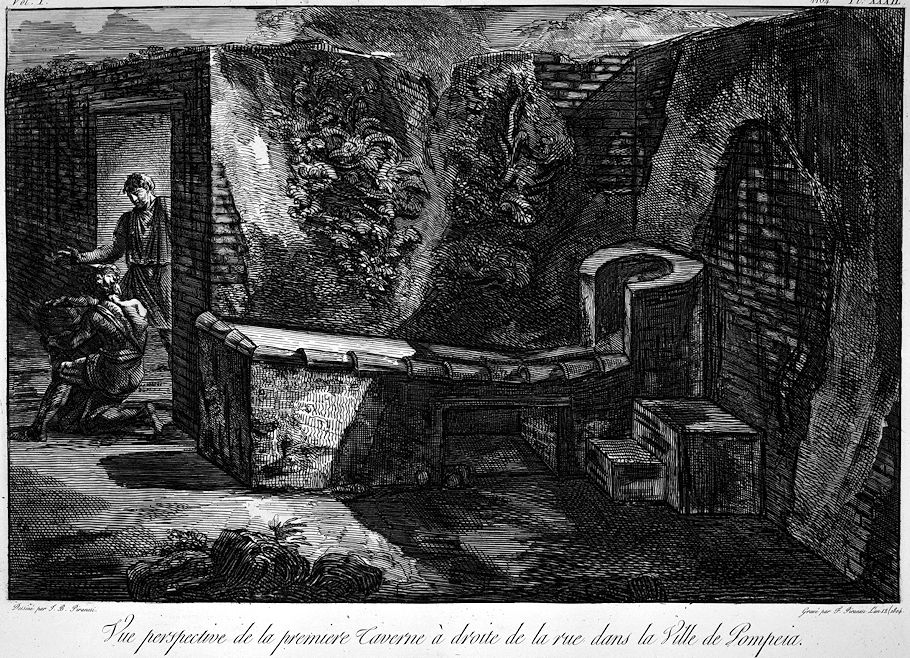
Perspective view of the first Tavern on the right of the City of Pompeii.
Drawn by G.B. Piranesi
Engraved by F. Piranesi Year 12 (1804)
30 July 1812 Thursday

Morning cloudy, wind SWSerly, temperature 74°. WD and myself spent most part of yesterday on conversations on literary subjects connected with religious opinions of the ancients and moderns, various doctrines of Christians: Milton, Cowper, Calvinism; modern material and skeptical[?] philosophy, ancient maxim. ex nihilo nihil, adopted from the epicurean school. He is today employed in reading Swedenborgh's Treatise on Influx. Temperature rose to 86°, wind very fresh from SSW, heavy clouds, sharp lightening and thunder at a distance. A slight shower about 5 from the ...... of a cloud.
30 July 1997
Piranesi's imagination
Piranesi/Campo Marzio... ...the combination of assimilation and metabolism. The notion of contiguous elements as ruins/generative elements is exactly the metabolic process. ...assimilation, i.e., the absorption of all the (historical) data pertaining to the Campo Marzio.
30 July 2006
A Sketch of London
Just keep in mind, the older you get, the more future you've actually seen.
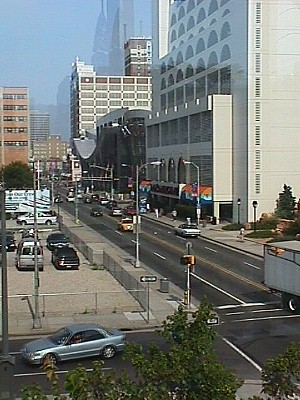 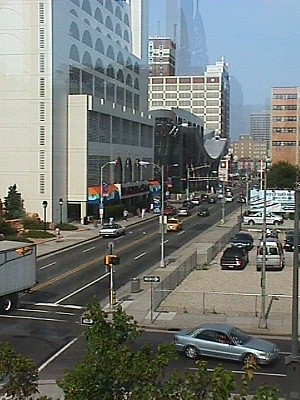
The Odds of Atlantic City 003
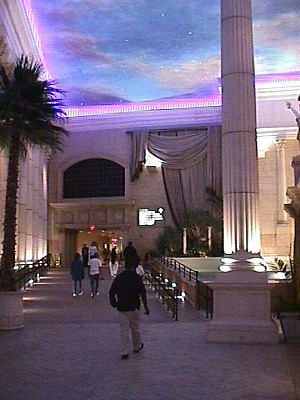 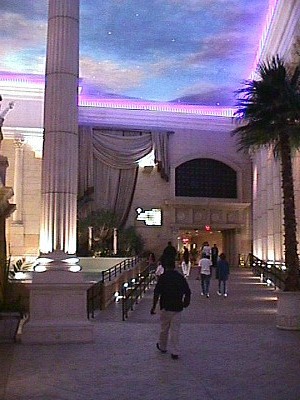
The Odds of Atlantic City 012
30 July 2007
Next Architect of the Capitol NOT an Architect?!
[The more things change the more they become reenactment?]
On January 25, 1805, Congress appropriated $110,000 a special victory for the architect, for Thornton on New Year's Day had had a printed letter issued to all the members of Congress virulently attacking Latrobe, refuting in a somewhat casuistic way Latrobe's statement to the committee that none of Thornton's drawings could be found, and violently supporting his own plan for the south wing. This had all been fodder for Federalist criticism in general, but it had failed to affect the action of Congress.
The same winter, however, brought Latrobe a disappointment. Justice Chase of the Supreme Court was to be impeached, and because of the importance of the case the first impeachment of a high-placed government official Vice-President Burr wished the surroundings of the trial to be as dignified as possible and asked Latrobe for a plan. Having left Washington on December 13 after a short stay, the architect immediately set to work to design the fitments and rearrangements of the Senate chamber the trial would require. He sent off his drawings to Burr on the seventeenth surely not an excessive time for the job. But mail was slow and Burr impatient; before receiving the Latrobe drawings he awarded the commission to Samuel Blodgett (the Massachusetts architect of the First Bank of the United States in Philadelphia), and all Latrobe's work went for nothing. Blodgett's design, Latrobe felt, was both more expensive and less convenient than his own.
Meanwhile he had taken time to search for proper stoves for the Capitol and for Monticello, to look for possible American sources for window glass, and to study new ways of making the roof of the President's House tight since it, like the roof of the north wing of the Capitol, had become a veritable sieve.
30 July 2009
Rant Magazine... "Artist"/Designer? submittals
Exponential Potential Architecture
1. Architecture plus Weaponization
2. Architecture minus Weaponization
3. Architecture times Weaponization
4. Architecture divided by Weaponization
5. Architecture greater than Weaponization
6. Architecture less than Weaponization
7. Architecture to the power of Weaponization
8. the Weaponization root of Architecture
30 July 2012
Is there a good reason for using curves?
A few questions:
How exactly are we so sure that curves mimic nature's process?
What exactly is the good reason for architectural design to mimic nature's (so-called) process via the use of curves?
What exactly makes an architectural design that mimics nature's (so-called) process via the use of curves ethical?
Does the use of curves in architectural design somehow reduce or prevent (all) architecture's (inevitable) entropy?
Or will we find out that the use of curves in architectural design will speed-up said architecture's entropy?
30 July 2013
30 July
Finished reading Log 28 this morning--been reading it since last Thursday. Also been thinking of starting a thread about it--Stocktaking 2013. In any case, there are many passages worth remembering and even discussing. For example (and off the top of my head), Kipnis saying very similar things vis-à-vis (a comparing of) Gehry and Schinkel; PVA lamenting 'destruction' via tweets, Lynn now working in 'isolation', Diller meeting a non-architect that took Venturi's history class and said it was the best course he ever took; AZP's personal CAD history; what Whiting described as 'evil'; etc. There's also the almost invisible veil of fear that postmodernism may not be dead.
30 July 2015
Art college professor suggests makeover for brutalist Boston City Hall
...you said, "...there is also a component of human preference that is innate and inherited. That's what defines human nature." So what exactly is this "component of human preference that is innate and inherited" and how exactly does it "define human nature"? And what exactly is the proof of its innateness, its inherited-ness, and its defining-ness?
Art college professor suggests makeover for brutalist Boston City Hall
...your example of eating grapefruit or eating sand is simply inane. It's no different than saying humans prefer to eat edibles rather than inedibles, or saying humans prefer listening to something audible rather than something inaudible.
If you really want to understand human nature look at human physiology where there are several dominant operations: fertility, assimilation, metabolism, electromagnetism, osmosis and omni-frequency. These operations are indeed innate both physically and mentally. Also look at human morphology which literally manifests the design and structure of human nature. To really understand human nature just look at the morphology and physiology of the human body itself.
Art college professor suggests makeover for brutalist Boston City Hall
The fact that humans (especially prior to Western hegemony) inhabited virtually every different type of environment that is available on this planet shows me that there really is no innate preference for one environment over another. As such, the very notion of 'preference' is a cultural distinction, and not an innate characteristic of human nature.
All you're really doing is trying to justify your preference for a very limited segment of Western culture as some sort of universal innate human trait.

30 July 2017
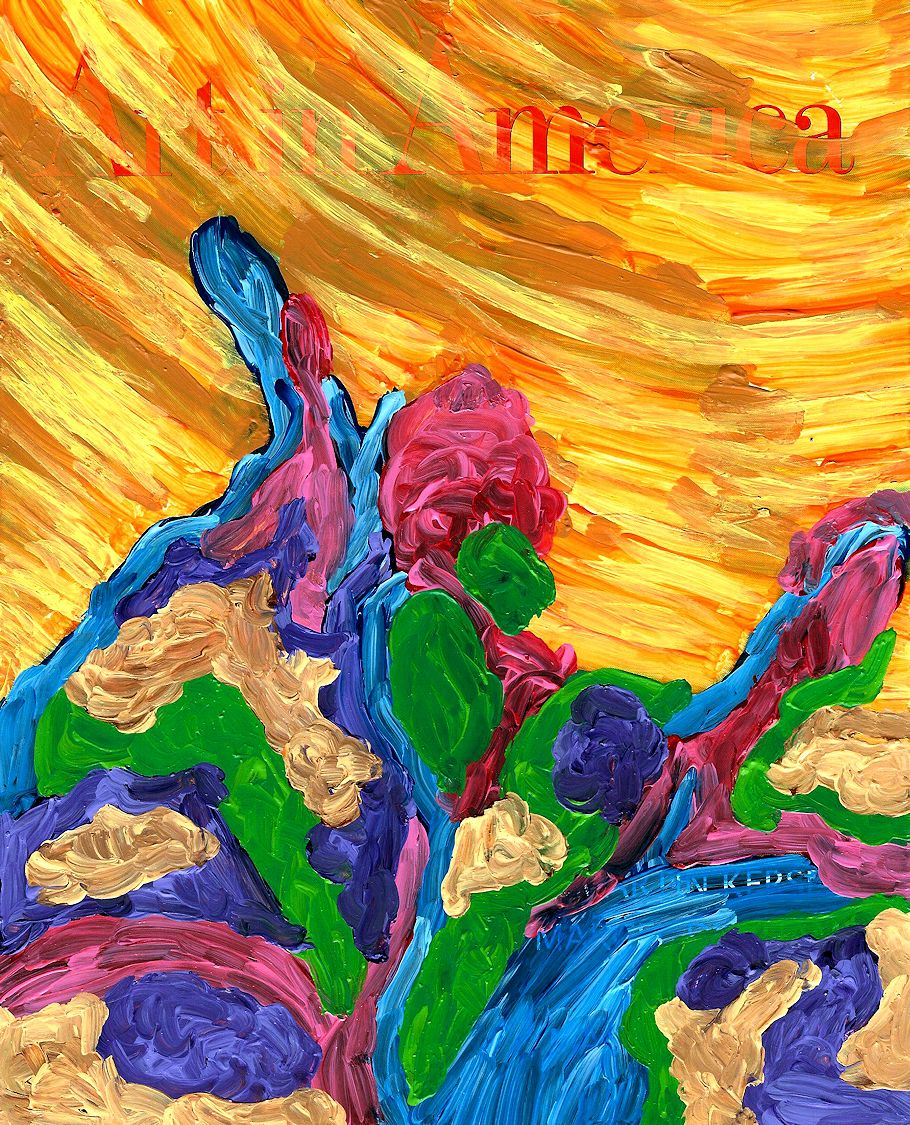
zero seven zero
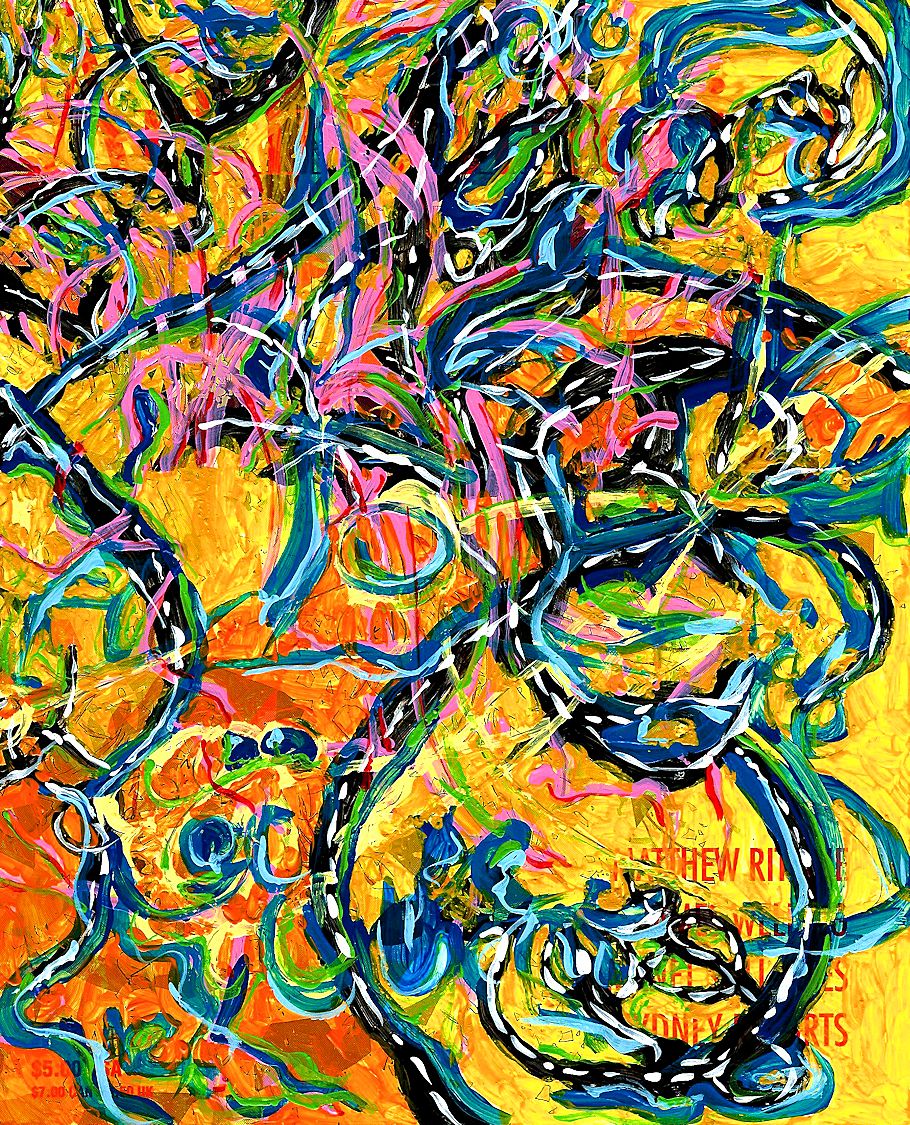
zero seven one
30 July 2023 Sunday
"Fundamental to the entire range of Khlebnikov's work was a holistic vision of nature; his efforts were attempts to understand humanity's place within it. To that end, much of his life was devoted to searching for the "Laws of Time,: to working out the fundamental equations that he believed govern naturel and historical events. For him the world was composed of primary oscillating forces whose mathematical properties were the concrete expression of the nature of the universe and everything within it. The "law of the see-saw," as Khlebnikov referred to these cosmic equations, was a powerful unifying mechanism that he understood to connect such disparate phenomena as the sound of words, and individual changes of mood, luck and personal events, and the rise and fall of great nations. It is tempting to consider these explorations as an intellectual aberration, but we would be wrong to do so. The history of science labors under a burden shared by no other branch of history: it is judged retrospectively through the highly selective lens of our current conception of truth and fiction. Science, progressing through the process of selection and rejection, affords us answers to our questions about the universe, but we must be careful not to confuse those answers with the process of finding them. The process of discovery--the way of the "inventor/explorer"--may be significant in its own right. Khlebnikov's ideas about the vibratory nature of the universe, for example, can be related to tantric cosmic theory and to quantum mechanics, a fact of particular interest for historians of modern ideas. Khlebnikov believed that scientists, poets, and artists are all engaged in the same enterprise--the search for a successful way to conceive of nature. At the end of his life he believed he had indeed found a general law that held true for many different types od phenomena, and on the basis of this discovery he even felt able to make general predictions about the nature of future events. And he saw this not as limiting our notion of human possibilities, but rather as liberating us from the blindness of fate. The scientific validity of his theories as judged from our point of view today is of less consequence than their effect on his work then, and their importance for our understanding of it now."
Velimir Khlebnikov, The King of Time: Selected Writings of the Russian Futurian, trans. Paul Schmidt, ed. Charlotte Douglas (Cambridge: Harvard University Press, 1985), pp. 5-6. The author of the "Introduction," which contains the above quoted paragraph, is not explicitly named.
"Khlebnikov manipulates conventional poetic forms in surprising ways. Basic to his style is the notion of what he called a "supersaga"--a number of seemingly discrete texts put together to form a whole. Zangezi is the most extraordinary of these strange hybrids, "an architecture composed of narratives," as Khlebnikov puts it in his introduction.
The supersaga works against the notion of the discreteness of a particular composition; it points to the fact of any artist's work as a continuous on-going whole, a constant reconsideration of a few basic themes. It also makes us reexamine our sense of the way things hang together. , the way we as readers make sense of a text. The apparent difficulties of a text like Zangezi--unexpected references, seemingly illogical and nonsensical juxtapositions--are deliberate attempts by its author to create a text where our experience of the world will not serve, but where we are forced, as children are, to perceive an unknown world."
Velimir Khlebnikov, The King of Time: Selected Writings of the Russian Futurian, trans. Paul Schmidt, ed. Charlotte Douglas (Cambridge: Harvard University Press, 1985), p. 189.
|